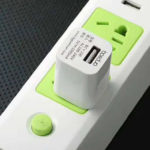Transporting a Refrigerator: Ensuring Safety and Proper Handling
Transporting a refrigerator requires careful consideration to ensure both the safety of the appliance and its contents. Improper handling can result in damage or potential hazards for both individuals involved and the surrounding environment. It is essential to follow the proper protocol for safely transporting a refrigerator. Let’s explore the necessary steps to transport a refrigerator securely:
Moving a Newly Bought Refrigerator
The technicians at the place of purchase will provide transportation and installation services for your newly purchased refrigerator. Please follow these steps for transporting your refrigerator:
Step 1: Carefully move the refrigerator and place it on a flat surface.
 Move the refrigerator carefully, place it on a flat surface
Move the refrigerator carefully, place it on a flat surface
Transporting the refrigerator carefully:
It is important to transport the refrigerator with great care to avoid any damage. Ensuring it is placed on a flat surface is essential to protect its functionality and efficiency.
If the refrigerator is not placed on a flat surface, it can result in excessive vibration which can impact the overall user experience. Furthermore, placing the refrigerator on an unstable surface can lead to refrigerant leaks and damage to the sealed internal components.
Step 2:
Stabilize the gas for a period of 4 – 24 hours

Stabilize the gas from 4 – 24 hours
After being transported to the installation location, it is important to allow the refrigerator to rest for approximately 4-24 hours in order to stabilize the gas. During transportation, there is a possibility that the gas in the system may become displaced and unstable. Without proper stabilization, this can lead to malfunctions such as abnormal pressure or gas leaks, which can pose a danger to both the user and the surrounding environment.
Step 3: Plug in the refrigerator

Ensure safe transportation and plug in the refrigerator
Once the process of gas stabilization is complete, you may proceed to connect and activate the refrigerator for usage.
Step 4: Putting Food Inside the Refrigerator
Now it’s time to put the food inside the refrigerator! This step is crucial in keeping your food fresh and safe to eat. Follow these instructions to ensure you do it correctly:
- Organize the shelves: Before placing any food inside, take a moment to organize the shelves. This will help you make the most of the available space.
- Keep temperature in mind: Different types of food require different temperature settings. Make sure to place them accordingly to maintain their freshness.
- Avoid overcrowding: One common mistake is overcrowding the refrigerator. This can prevent proper air circulation, leading to uneven cooling and potential spoilage. Leave some space between items.
- Use proper storage containers: To maintain food quality, use airtight containers or cover your dishes with plastic wrap or foil.
- Label and date: To keep track of the freshness of your food, consider labeling and dating each container or package.
By following these steps, you’ll ensure that your food stays fresh and delicious for as long as possible!

Put food inside the refrigerator
Please ensure that the internal temperature of the refrigerator is stable before placing a variety of food items inside.
Moving a Pre-Owned Refrigerator to a New Location
If you are looking to transport a used refrigerator to a different location, kindly follow the instructions below:

It is crucial to remove all food from the refrigerator before moving or performing maintenance to prevent any damage, breakage, or contamination. This is especially vital when relocating a refrigerator to minimize the risk of food loss and contamination to other items.
Step 2: Remove the shelves from the inside.

The interior shelves of a refrigerator can be constructed from materials such as glass, plastic, or lightweight metal. Prior to relocating the refrigerator, it is essential to remove the shelves in order to prevent potential collisions or distortions. By removing the shelves and storing them separately during transportation, one can ensure their safety and minimize the risk of breakage or damage.
Step 3: Unplug the refrigerator

Unplug the refrigerator
To ensure safety during transportation, it is important to unplug the refrigerator. This will prevent any accidents and ensure that there is no power going to the appliance.
Step 4: Defrosting and Drying the Refrigerator
To prep your refrigerator for moving, it’s important to first defrost and dry it. Follow these steps to ensure a smooth transition:

Defrost and dry the refrigerator before moving
When moving the refrigerator, there is a risk of water leakage or spillage into the electrical or other components. This can potentially cause damage to the refrigerator and pose a safety hazard.
To minimize the risk of water leakage during transportation, it is important to defrost and dry the refrigerator before moving it. This will help remove excess water and ensure the safe transportation of the appliance.
Step 5: Secure the refrigerator door.
 Ensure the refrigerator door is securely closed
Ensure the refrigerator door is securely closed
If the door is not properly closed during transportation, it can result in collisions, falls, or damage to the refrigerator, as well as pose a safety hazard to those nearby. To prevent this, rubber bands can be used to securely fasten the refrigerator body, ensuring that it remains closed throughout the transportation process.
Step 6: Move the refrigerator in a careful and secure manner.

Gentle and safe refrigerator moving
Ensuring Safe Transportation with a Minimum of Two People
Maintaining the safety and integrity of our transportation process is paramount, particularly when it comes to handling large and complex appliances like refrigerators. Therefore, we require a minimum of two individuals to move these items with care and diligence.
By delicately maneuvering the refrigerator and taking precautionary measures, we can minimize the risk of collisions, prevent any potential damages, and guarantee the safety of everyone involved.
Step 7: Place the refrigerator in the new location and continue using it.

Place the refrigerator in the new location and continue using it
Once the refrigerator has been moved to its desired location, it is important to allow the appliance to stabilize for approximately three hours before disconnecting the power cord and utilizing it.
What You Need to Think About Before Moving a Refrigerator

Considerations when moving a refrigerator
Here are some important considerations to keep in mind when moving a refrigerator:
-
Proper refrigerator positioning: When transporting a refrigerator over long distances, it is important to position it vertically, rather than laying it down. This precaution is necessary to safeguard the integrity of the gas and gas pipes within the refrigerator.
-
Protective Shields: Install protective shields around the refrigerator to safeguard the condenser coils and external components against potential collisions and damage during transportation.
-
Gas Stabilization: It is recommended to allow the refrigerator’s gas to stabilize for approximately 3 hours before plugging it in and using it. For new refrigerators, it is advisable to wait 6 to 24 hours to ensure the gas system operates smoothly before usage.
-
Minimum of 2 people: It is necessary to have a minimum of 2 people when moving and transporting a refrigerator. This is done to reduce the chances of accidents and to ensure the safety of both the refrigerator and the individuals involved.
-
Ensure the Refrigerator Door is Secure and Fastened
Before moving the refrigerator, it is important to make sure the door is firmly closed and securely fastened. By doing so, you can prevent any unintended opening of the door and potential damage to the refrigerator.
-
Ensure the surface of the refrigerator is well protected during transportation. Use a soft cloth, plastic wrap, or even a cardboard box to safeguard it from any potential scratches or damage.
Here are the recommended methods for safely transporting a refrigerator. We would like to share this valuable information with you to assist you in the refrigerator transportation process.
Explore 12 Amazing Destinations for Biking Trips
Unlock Vietnam in a brand new way with an exciting biking tour! Discover the stunning beauty of the country with Dien May XANH’s top 12 must-see destinations. From sweeping plains to clear blue beaches and mountainous vistas – experience all the sights with your own personal cycling tour. Find your ideal route and set out for an adventure today!






































